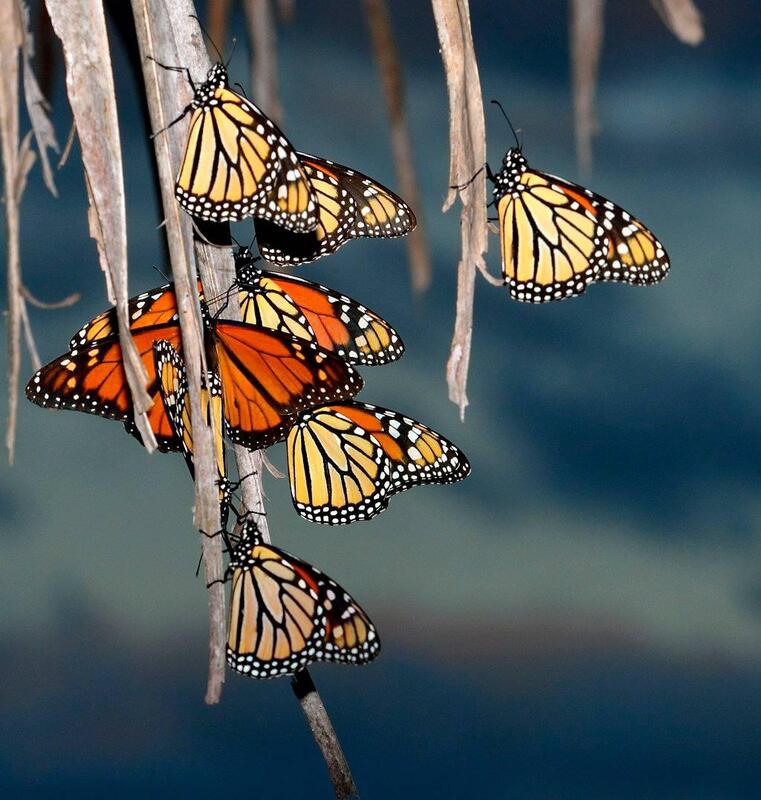Nymphalidae : Danainae
Danaus plexippus (Linnaeus, 1758)
Monarch
Danaus plexippus (Linnaeus, 1758)
Monarch
Description and Similar Species: Wingspan 88-120mm. Sexes similar though males have slight;y narrower wingtips and if the upperside is seen males have a small dark androconial patch on the upper hindwing (see photo below). These scent scales are used to disseminate pheromones during courtship and are not present on females. The Monarch is larger and lighter orange in colour than the other two Danaus species and has a slower flight with more glides. The Viceroy Limenitis archippus is a rare straggler to Cuba and can be distinguished by the black post-median line running across the hindwing.
Range: From Canada south to Brazil and several of the islands in the West Indies. The eastern North American Monarch population is notable for its annual southward late-summer/autumn migration from the US and southern Canada to Mexico. During the fall migration, Monarchs cover thousands of miles, with a corresponding multi-generational return north in spring/early-summer. The western North American population of Monarchs west of the Rocky Mountains often migrates to sites in California but has been found in overwintering Mexican sites as well. Although these north-south migrations of the eastern North American population pass overland further to the west it has been known for some time that small numbers pass through Cuba and some stay to augment the resident population there. You can read the PhD thesis on the subject by Cristina Dockx (2002) here but it should be borne in mind that ~20 years has elapsed since this dissertation was written and so much has been learnt since then.
Status: Widespread but not common on roadsides and other sunny open spaces especially in the west and near the coast.
Nectar Plants: Lantana, Chromolaena, Stachytarpheta and Lippia.
Larval Foodplants: Larvae have been found on Asclepias curassavica, Asclepias nivea and Calotropis procera.
Range: From Canada south to Brazil and several of the islands in the West Indies. The eastern North American Monarch population is notable for its annual southward late-summer/autumn migration from the US and southern Canada to Mexico. During the fall migration, Monarchs cover thousands of miles, with a corresponding multi-generational return north in spring/early-summer. The western North American population of Monarchs west of the Rocky Mountains often migrates to sites in California but has been found in overwintering Mexican sites as well. Although these north-south migrations of the eastern North American population pass overland further to the west it has been known for some time that small numbers pass through Cuba and some stay to augment the resident population there. You can read the PhD thesis on the subject by Cristina Dockx (2002) here but it should be borne in mind that ~20 years has elapsed since this dissertation was written and so much has been learnt since then.
Status: Widespread but not common on roadsides and other sunny open spaces especially in the west and near the coast.
Nectar Plants: Lantana, Chromolaena, Stachytarpheta and Lippia.
Larval Foodplants: Larvae have been found on Asclepias curassavica, Asclepias nivea and Calotropis procera.
Egg
Larva
Pupa
Foodplants and Habitat












